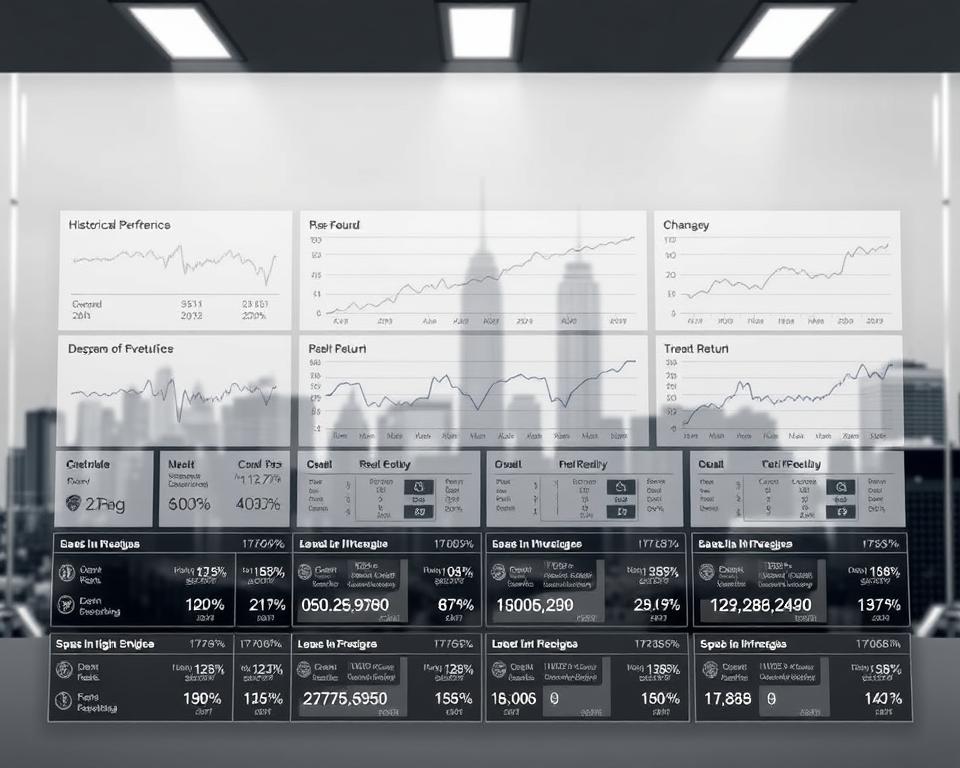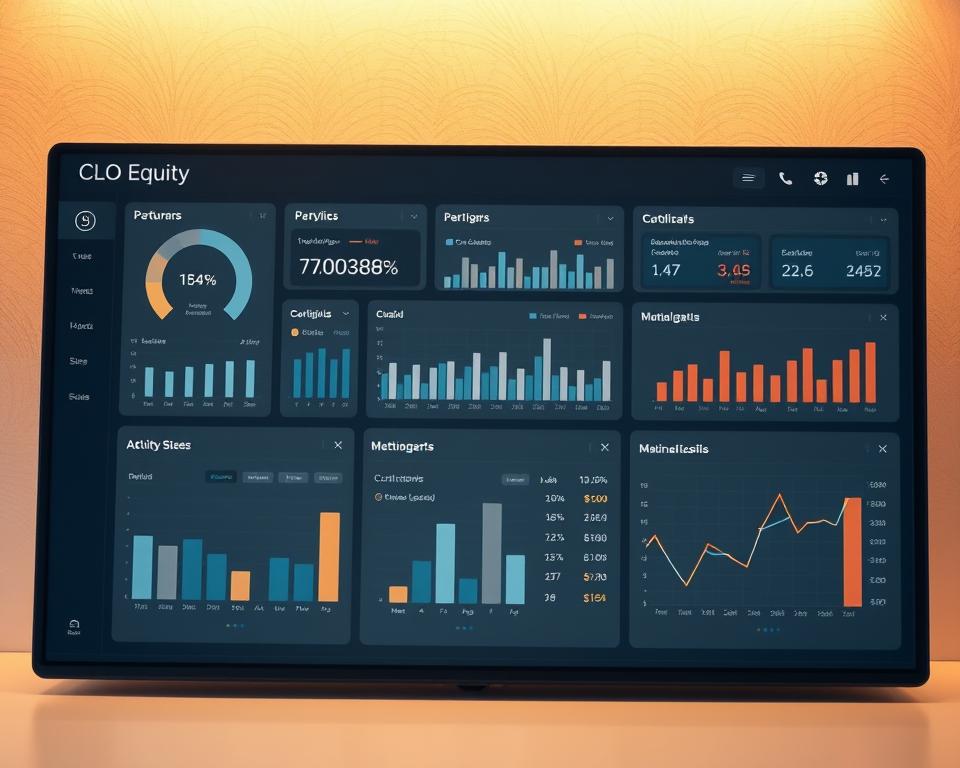Insights for CLO Equity Investors – Your Handbook
Did you know that over 60% of institutional investors now see collateralized loan obligations (CLOs) as a key part of their portfolios? A look into CLO investments uncovers the reasons behind its growing allure. You gain potential for strong returns, dependable cash flow, and portfolio diversification. Such advantages serve as a buffer in turbulent markets.
In this guide, we’ll dive into the details of CLO equity. Topics include the value of veteran CLO managers, the distinctive features of CLO equity vehicles, and investor roles. When you finish reading, you’ll appreciate why CLO equity can improve portfolio performance.
- CLOs offer significant diversification benefits for institutional investors.
- The cash flow dynamics of CLO equity can provide attractive returns.
- The track record of seasoned managers greatly influences results.
- These investments often act as a cushion during market slumps.
- CLO equity vehicles are growing in popularity with alternative funds.
Getting Started with CLO Equity
Exploring the world of collateralized loan obligations (CLOs) reveals their vital role in modern finance. They consist of pools of senior-secured, non-investment grade debt. In total, they represent a large segment of the $1.4 trillion structured credit arena. Market participants want to know exactly what CLO equity entails.
CLO equity is a claim on the remaining cash flows from CLOs after all debt is paid off. In a low-rate environment, this feature delivers attractive income potential. Their variable rates protect investors from rate shifts. This makes CLOs an attractive investment option.
Grasping the structure of CLOs and the specifics of CLO equity is key to assessing their returns and risks. This guide aims to demystify these ideas. I’ll illustrate why they matter for portfolio decisions.

CLO Equity Investors: Why This Asset Class?
These funds provide a novel diversification opportunity. Its appeal lies in strong historical results and yield potential. It appeals to investors seeking stable returns amidst market volatility, making CLO equity a compelling option.
The Attractive Return of CLO Equity
CLO equity’s return is impressive, with double-digit annualized cash-on-cash returns common. In the reinvestment window, returns frequently reach high-teen territory. Hence, it ranks high among high-yield options that maintain credit standards.
Past Success of CLO Equity
Built-in resilience shines through CLO equity’s past results. Rather than delayed payoffs, it delivers regular quarterly income, avoiding a J-curve. This makes it a reliable choice for balancing risk and seeking attractive returns, solidifying its place in the financial market.
How CLOs Are Built
Their complexity belies the attractive opportunity they offer. The payment waterfall governs how each tranche receives cash flows. Tranches vary by risk level and yield potential. The safest, highest-rated tranches get paid before all others. Lower tranches accept more risk hoping for richer payouts.
Senior secured loans are a key component in CLOs. They hold a first-lien position, ensuring they are prioritized in payment distributions during bankruptcy. This characteristic makes CLOs less risky than other corporate debt, appealing to investors seeking a balanced risk-reward profile.
What Sets CLO Equity Apart
Exploring CLO equity investments reveals a standout feature: their cash flow dynamics. Early, sizable cash payouts accelerate return of capital. Unlike private equity’s longer wait for returns. These traits underline the special role of CLO equity.
Early Cash Flows in CLO Equity
The cash flow dynamics of CLO equity investments are key to their appeal. These structures generate significant cash flows early, enabling investors to see returns sooner. Upon issuance, cumulative payouts can exceed those of standard instruments. This is highly beneficial for institutional investors seeking liquidity without sacrificing upside.
Flexibility Across Market Cycles
Active management allows CLO funds to pivot with market trends. They rebalance holdings as conditions shift. Such oversight helps maintain returns even amid upheavals. These traits underscore CLO equity’s durability.
Why CLOs Diversify Your Portfolio
CLOs introduce new dimensions of risk spreading. CLO funds expose me to a wide range of corporate loans, lowering the risk of credit defaults. The low correlation with traditional assets like stocks or bonds adds stability.
CLO equity firms stand out due to their active management. They tweak allocations to optimize returns amid shifting climates. It’s critical for risk control and portfolio durability.
The diverse assets in CLOs not only spread risk but also stabilize cash flow. This is attractive for those seeking consistent income in volatile markets. This strategy embeds diversification right into my credit allocation.
Understanding Potential Downsides
Understanding risk elements is crucial before investing in CLO equity. Since markets change rapidly, investors need to monitor credit risks closely. Awareness of inherent weaknesses is key.
Understanding Credit and Collateral Risks
Credit and collateral risks are at the heart of CLO risk factors. Recessions often spike credit losses. A recession could degrade loan cash flows. This, in turn, affects the cash flows of CLOs, potentially leading to a decline in collateral value.
Equity investors stand to lose in such stress scenarios. I assess loan ratings and collateral buffers before investing. It keeps me informed about potential pitfalls.
Trading and Liquidity Concerns
Liquidity is another major risk for CLO equity investors. In times of financial stress, the market for CLO equity can become tight. You might have to accept deep markdowns to exit positions. Market sentiment can also impact valuations, making them drop in tough economic times.
Watching liquidity indicators is vital for risk management. Partnering with teams known for rigorous credit oversight can lessen risk.
Tailoring approaches helps meet return targets within risk limits. There are multiple paths to enter the CLO equity space. Consider these popular structures:
- Captive Equity Funds: They focus on selected equity tranches. They provide a balanced equity basket overseen by pros.
- Direct Deal-by-Deal Investments: It offers bespoke equity positions per deal. It grants greater selection power at the cost of expertise needs.
- Multi-Asset Credit Funds: They mix CLO equity with bonds and loans. This creates a balanced portfolio that may reduce risk.
Each strategy has its benefits and considerations. For example, captive equity funds are great for newcomers to CLO investments. They provide expert handling and automatic diversification. Single-deal picks can pay off but demand market savvy. Hybrid credit funds bring together multiple asset types for stability.
Reviewing these tactics helps refine my allocations. It matches my objectives, capacity, and comfort with risk.
The Role of CLO Managers in Performance
Manager expertise underpins equity performance. Their decisions in reinvestment windows often lift yields. This hands-on approach enables CLO investment firms to effectively navigate market complexities. It positions them to optimize performance.
Choosing the right CLO manager is critical. Prioritize managers with history of navigating defaults and resets. Skilled CLO equity managers adapt well to market changes, impacting CLO performance. Their judgment and credit selection skills uphold performance amid cycles.
The selection of experienced CLO equity managers can make a significant difference in returns. Appreciating manager impact guides better investment decisions.
How CLO Equity Stacks Up
In this section, we’ll explore how CLO equity compares to private equity investments and high yield bonds. This analysis aims to help investors understand where CLOs fit in their investment strategy. It’s essential to know these differences to make informed decisions.
CLO Equity or Private Equity?
These two asset classes diverge in important ways. With CLO equity, you get secondary market liquidity and quarterly distributions, while private equity often requires multi-year commitments.
- Risk Profiles: Private equity investments often involve higher risks due to the focus on operational improvements. CLOs, with their diversified asset pools, can reduce individual credit risks.
- Yield Characteristics: Long-haul PE upside is tempting, yet CLOs offer predictable, competitive current yields.
- Duration: PE holds can last a decade, while CLO equity stakes trade quarterly.
CLO Equity vs. High Yield Bonds
How do high yield credits stack against CLO equity? They both pay interest, yet their frameworks diverge. High yield bonds have fixed interest payments and are sensitive to interest rate changes, leading to volatility.
- Cash flow advantage: Diversified loan sources spread payment risk.
- Issuer Risk: High yield bonds are tied to single entities, whereas CLOs offer a diversified asset pool.
- Return Potential: In strong markets, CLO equity yields often exceed junk bonds and hold up better to rate shifts.
Looking ahead, the CLO investing landscape is set to change dramatically. CLO ETFs could democratize access and boost liquidity. This development could bring about increased liquidity and transparency, fundamentally altering how we view CLO equity investments.
Upcoming regulations could redefine risk management standards. They could tighten credit controls and standardize valuations. Being aware of these reforms will guide my investment approach.
Technological advancements in data analytics and risk assessment tools are poised to transform my evaluation of CLO opportunities. They enable richer due diligence and market forecasting. This will enable me to seize emerging opportunities in this ever-evolving investment environment.


